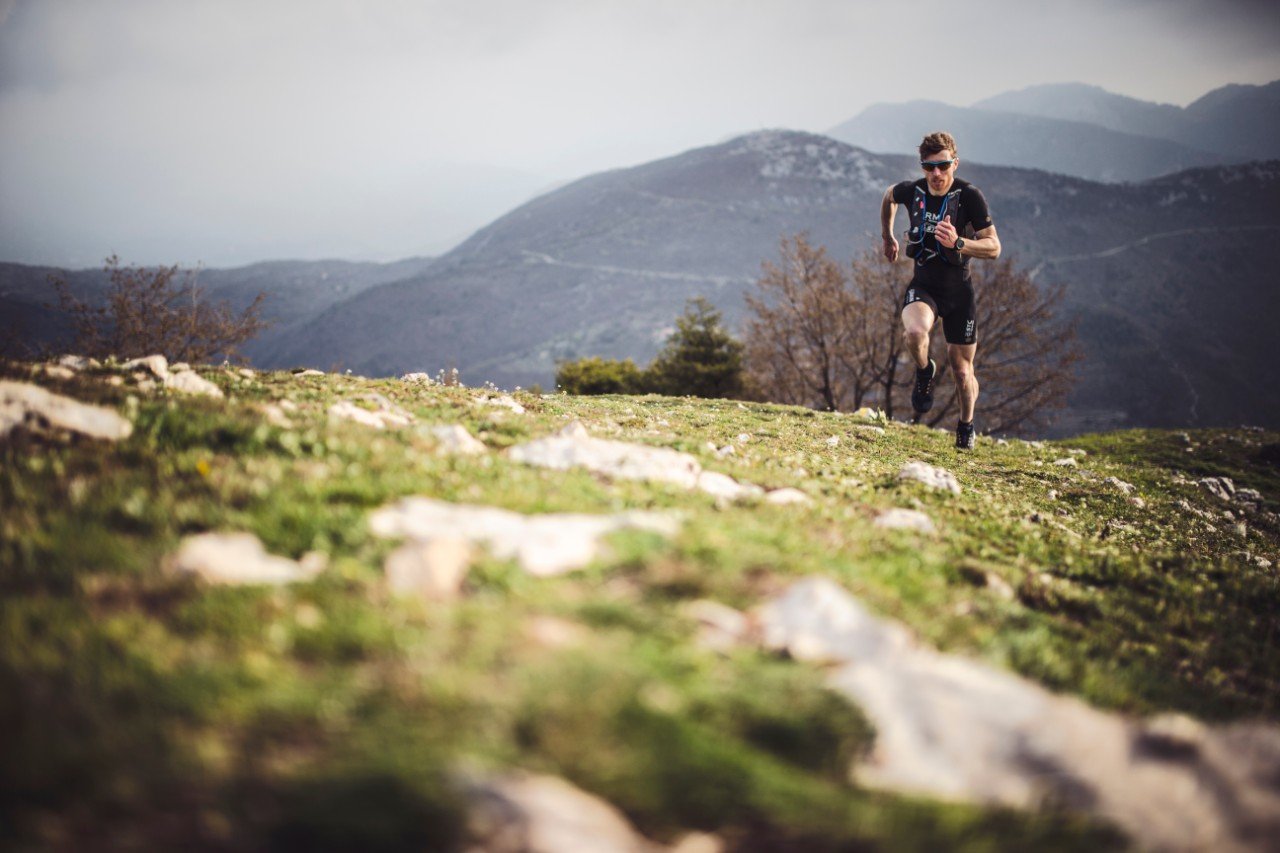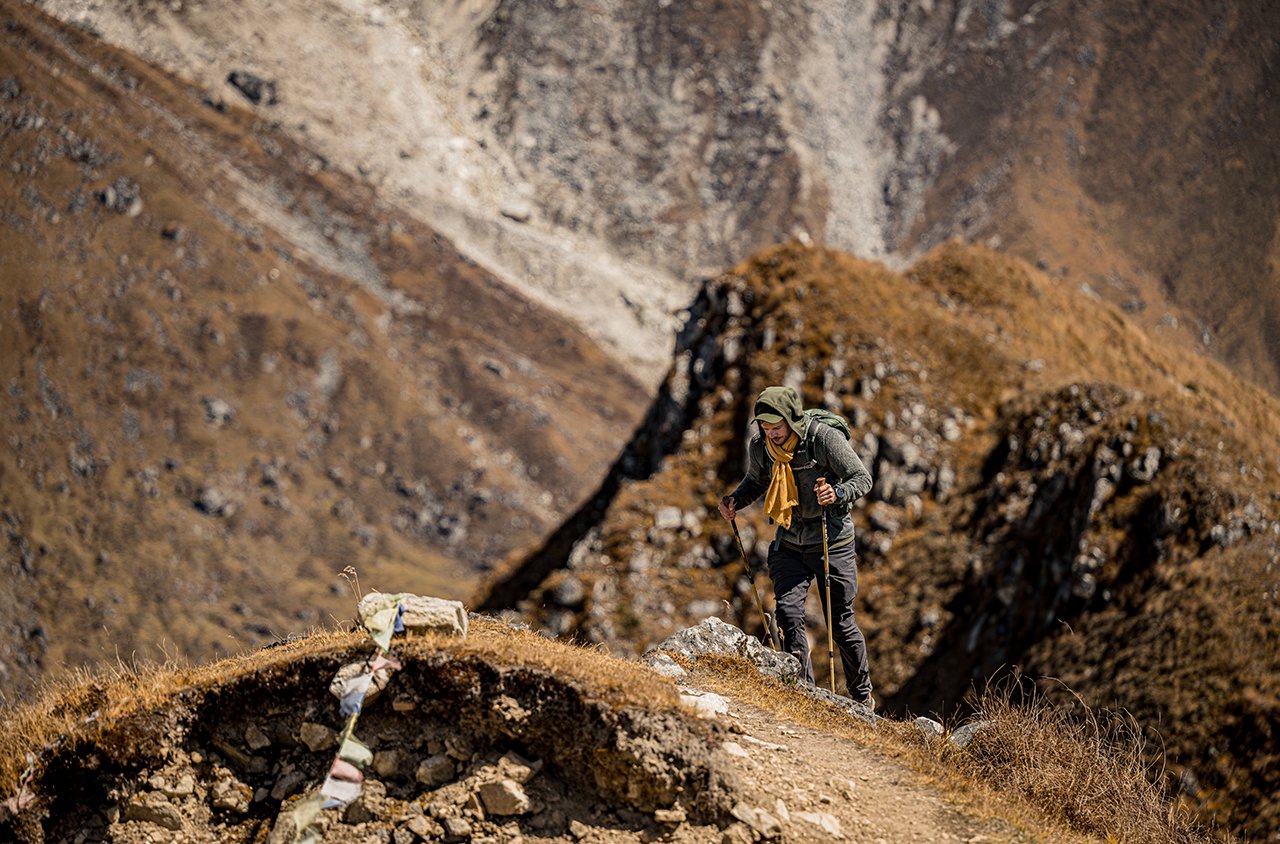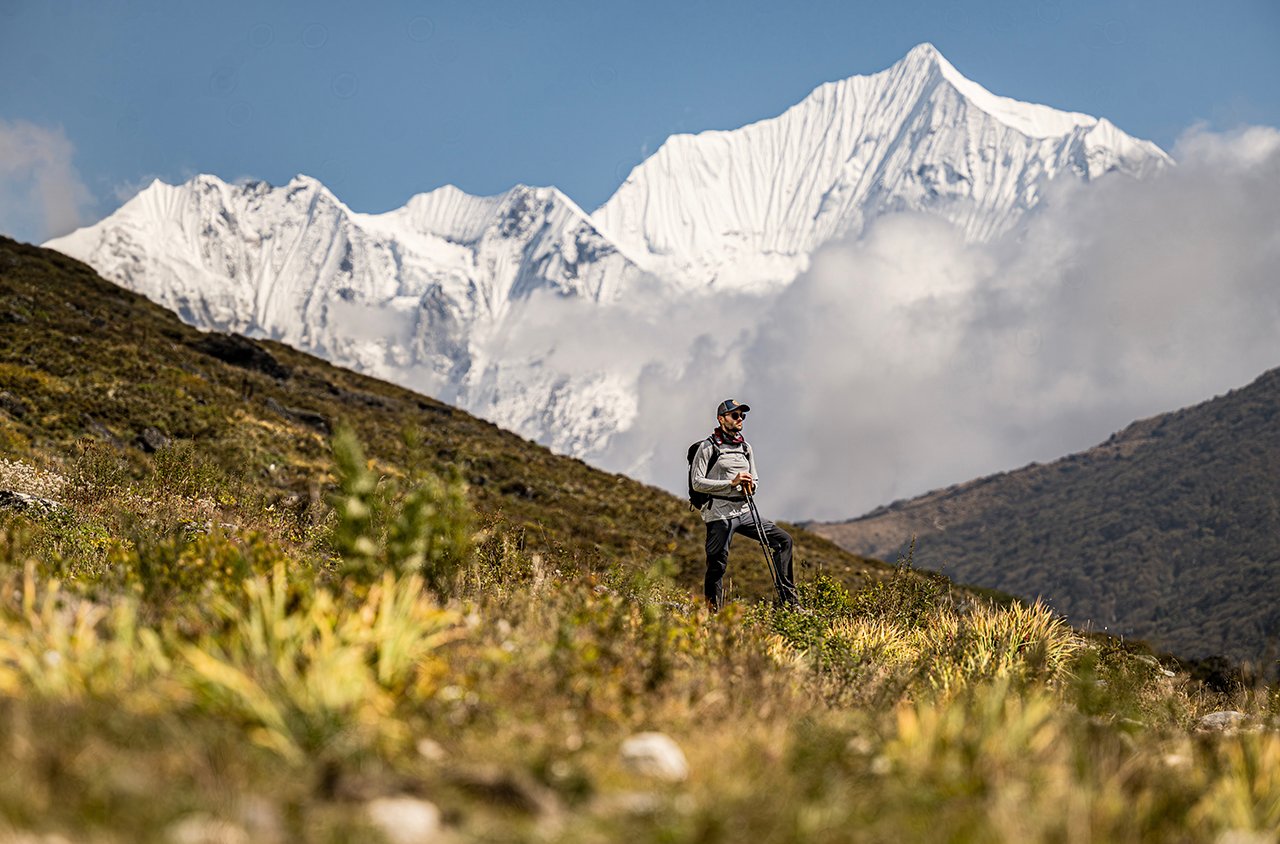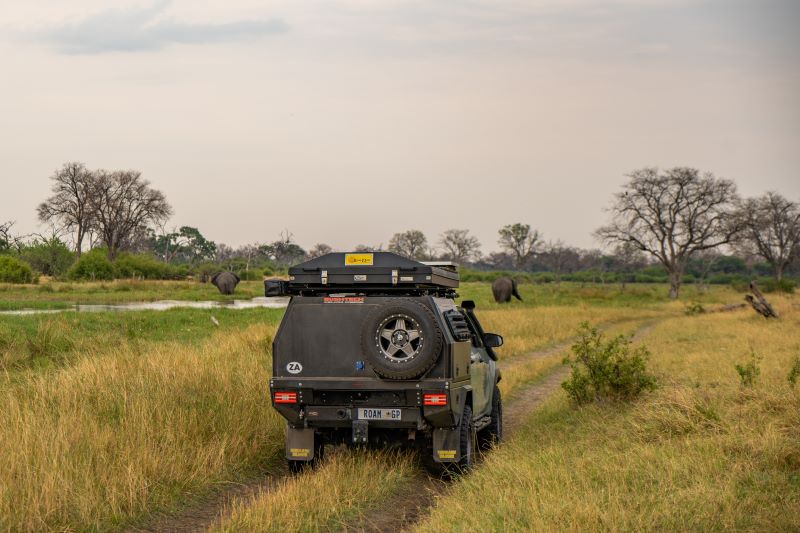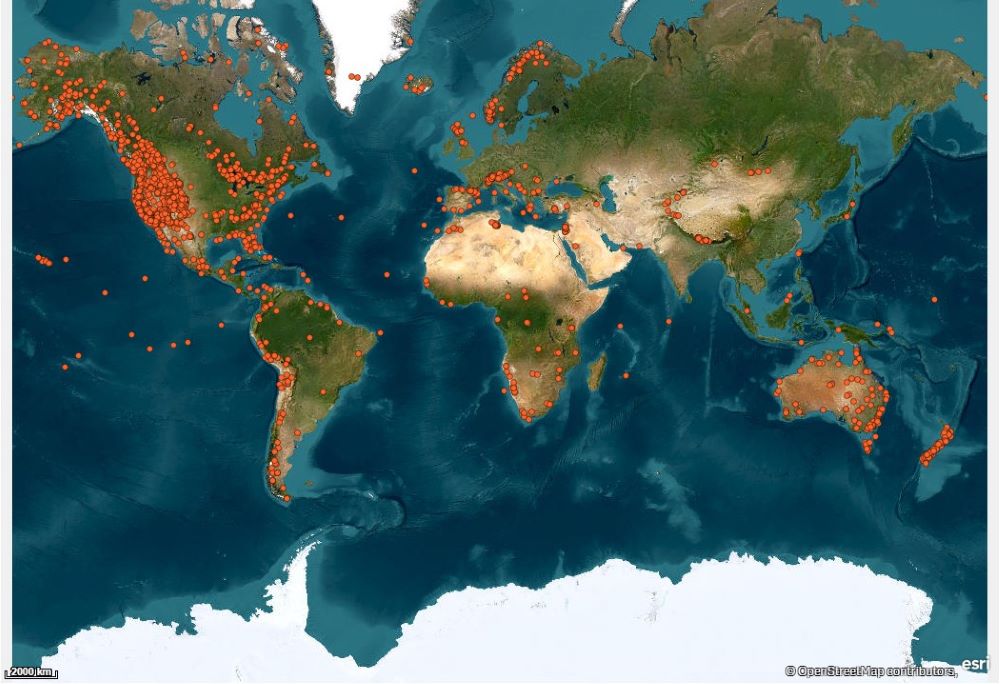
X-Alps Preparation with Athlete Gavin McClurg
The Red Bull X-Alps event is just over a week away from kicking off and we were fortunate enough to sit down with the master outdoorsman, paraglider, Red Bull X-Alps competitor, and Garmin sponsored athlete, Gavin McClurg. We tapped into the mind of one of the most relentless athletes on the planet. Below he explains what it takes to prepare for an insane endurance race like the X-Alps.
How do you prepare for a race like the Red Bull X-Alps?
I could write a book about the training but here’s the short version. One of my supporters in the race is Ben Abruzzo. He’s ex-military and for fun on his own has competed in events like the Death Race and the World’s Toughest Mudder. He’s a professional trainer and arranges all my physical training. Every move I make is tracked with the Garmin fēnix 5s and loaded into Garmin Connect. The hard stuff began early October with 9 months of physical preparation. To be sure, the race is always won by the best pilot, even in years when the weather is terrible and flying is limited so flying training is always the top priority. The physical training is a combination of strength, aerobic and anaerobic conditioning with increasing loads as the months pass with the goal that I peak at race start (July 2nd) with a body capable of doing daily ultrathon distances but with huge vertical gain across the Alps for 12 days in a row carrying all my gear (25 pounds- wing, harness, helmet, instruments, etc.). The goal is to make my body resilient through heavy weight/strength training so the joints and feet don’t fail during the race, the cardio system strong aerobically for the LONG walks on the ground (and conditioning the feet), and the anaerobic threshold SUPER high for times when speed is needed going up mountains to launch. We do 2-5 day race simulations every month, which would model the outputs, needed for the race. A typical week last May would have been two days of 40 to 60 km walk with pack, 2 days of hard gym work (lots of Kettle bells, Olympic lifts, super sets), and two days of vertical training- going HARD up hill 3 to 5 thousand meters.
How was your X-Alps experience in 2015?
It was in some ways the most incredible thing I’ve ever done. The highs are as high as you can get, and the lows pretty brutal, but our team laughed our way across the Alps and we were talking about doing it again long before the first one was over. On the first day, a perfect flying day from Salzburg and Turn point 1 off the Gaisberg I was out in front all day, even in the lead for a bit. I ended the day in 4th at the 3rd turn point at Aschau and we were on cloud 9 as a team. By the end of day 3 my feet were destroyed (Europe was in the throes of a major heat wave and many of the athletes feet got severely blistered) and a series of poor flying moves had put me back in 18th place. We continued fighting but by day 7 I was still back in 18th place and making it to Monaco were looking very unlikely. At the time I could barely walk. The next day was windy and very challenging but I flew what we call a “deep” line, one that no one ahead of my had flown and we covered a remarkable distance against the wind- over 170 kilometers in one flight across the Matterhorn and some of the highest terrain in the Alps. That night I landed in 7th place and getting to Monaco was secured. There’s only one way to get to “that place”- the X-Alps will get you there guaranteed!
Did you train differently for 2017?
Not really. I had major shoulder surgery (rotator cuff) October 4th, and we officially start the hard physical training October 1st so Ben and I had to work around that this year which just meant in most cases it was more boring until I could really use my arm again. So for example instead of ski touring all-day and getting my vertical in my back yard of Sun Valley I would do it on a stair mill in the gym instead. But the load and the hours were similar. Which is to say- it was unrelenting!
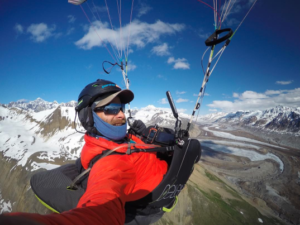
What’s the hardest part about a race like X-Alps?
The race is won by whoever flies the most, even in years when the weather is terrible. There are always windows. But often the conditions are terrifically scary and dangerous. You’ve got to be really, really confident and at times you just have to pocket the fear and put it aside and perform, even when you are exhausted. The physical side of the course can be pretty overwhelming, but if you’ve trained properly and put in the time, the physical side is just what it is- a means to get up a mountain fast and get back in the air. To me the race is the perfect game. It’s nothing like an ultrathon or even the Tour De France where you just put your head down and charge and trust in the training and know how to suffer. The X-Alps has all those factors, but you’ve got thousands of decisions to make every day- what route to fly, where to find a thermal, how to deal with too much wind, rain, snow, glaciers, places where you can’t land…and a wrong decision can literally be fatal. It’s the most amazing way to see the entire length of the Alps that exists!
How long have you been paragliding? And how did you get into the sport?
I met a girl (Jody MacDonald) in 2004 when I was sailing around the world the first time. I’d had friends who had begged me to get into flying for years but I kept hearing about all the accidents and that the fault was always the pilot (i.e. it was never the gear) and they happened because people made bad decisions. I kept hearing that it was dangerous for people who had a lower aversion to risk. Well…I was the king of taking big risk and making bad decisions! So I purposefully avoided it. But when I met Jody she was super into flying and well…girls make you do bad things! But I was immediately hooked, and when I learned that you could actually use them to travel, that you could launch off some place and have no idea where you would end up- well then it was all over.
Have you had any recent paragliding adventures this year?
The biggest one was this time last year, crossing the full length of the Alaska Range unsupported. The expedition took 37 days and I completed the last 1/3rd of it (200 miles) alone. No one had ever flown in the Alaska Range so we had no idea if it was even possible. I planned that one for 6+ years and you can watch the trailer here.
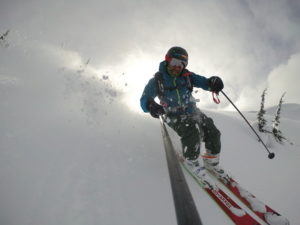
How does your background with sailing and circumnavigating the world twice translate to the world of paragliding and events like the X-Alps?
Funnily enough all the years of whitewater kayaking and sailing/kite surfing (unknowingly at the time as I wasn’t a pilot) have really helped me understand how air flows and works. It also really helped me understand the weather because successful paragliding is all about understanding and using the weather. From the micro to the meteo, every good pilot is an expert in understanding the sky. I think all those years of sailing also really built my confidence and taught me again and again that mistakes happen and problems come up, but there is always a solution.
How can you tell where thermal pockets will be? What happens if you don’t find any?
Thermals begin as pockets of hot air on the ground. Eventually that hot air has to release and go somewhere. Flying cross-country is all about finding thermals and using them to climb. Flying cross country well is finding a thermal and using them efficiently so you can climb faster than other pilots and spend as much time as you can on glide (ie traveling fast in a straight line to the next thermal). Thermals often “trigger” off objects- houses, trees, tops of mountains, etc. And they are usually found on the sunny side, so typically we fly in the morning on SE faces and end the day on W or even NW faces (if we are in the northern hemisphere). Paragliding is pretty simple- if we find a thermal we can keep going. If we don’t, we land on the ground. On a good day in mid summer you can fly hundreds of kilometers and stay in the air for twelve hours or even more.
What Garmin products will you be using during the event?
My fēnix 5s will never leave my wrist except to be charged. And I never EVER fly without my inReach. Our team van will be using RV 770 LMT-S Navigation for the roads (Critical!) and I’ll be capturing as much as I can with the Garmin VIRB
How do you use Garmin for training? Everyday Life?
I wear my chest heart rate monitor practically more than I do pants. I track every step, weight lifted, run, vertical climb- everything I do physically with my fēnix 5s and heart rate monitor. I upload and sync to Garmin Connect every day and this way all my metrics are logged and can be assessed regularly by Ben so we can adjust as necessary. It’s an amazing tool.
Are there rivalries in a sport like this?
Yes for sure. Because paragliding is so dangerous we all have one another’s backs, but the King of our sport is Chrigel Maurer. He’s won the last 4 X-Alps and many think he’s unbeatable. But there are also great rivalries between many of the athletes. I don’t really have a rival though. I just want to win!
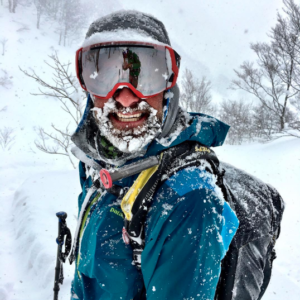
How important is your team during a competition like X-Alps?
They are CRITICAL. They think when you can’t. They feed, they water, they make a ton of critical decisions and they are sport psychologist, trainer, mental coach, logistic, driver, physical beast, weather expert all rolled into one.
When you’re re-fueling in between flights and hikes, what do you eat? What’s your calorie intake? Where do you sleep?
Typically we shoot for 6,000-8,000 calories a day. I eat as much whole food as possible whenever I can (often I can’t). As much protein and fat as possible. Carbs are necessary still for sure and keep you from bonking so when needed the Gu’s, protein shakes, a ton of electrolytes and hydration mixes (I use and love Skratch Labs) and my new favorite- Vespa Energy mixes, which helps me use fat as fuel. Most often I sleep in our race van. In some cases you end up high at the end of the day and have to bivvy or stay in a refuge, which are ubiquitous in the Alps.
Why the X-Alps? What entices you to compete?
There is nothing bigger, harder or more absurd in the sport of paragliding, or in my opinion- any human flight sport than the Red Bull X-Alps. It’s reputation as the “toughest adventure race on Earth” is just something I couldn’t resist. I had a dream when I was young of becoming an Olympic Ski Racer, and I got pretty close but a couple of career ending knee injuries sidelined that dream and having something like the X-Alps to participate in now, some 25 years later is really special. When I first discovered the X-Alps (2007) I was fascinated and glued to the whole event. I couldn’t believe there were people who could DO something so hard or that they could be good enough pilots to fly through such amazing (and difficult) terrain. I never thought back then that I would be able to do it myself, but I was hooked and I guess it was just something I couldn’t let go.
The X-Alps returns July 2nd and you can watch all the action here. To learn more about Gavin McClurg and his amazing lifestyle you can visit his website here.
Don’t forget to share with us on Facebook, Twitter, Instagram and use #HaveNoLimits.
